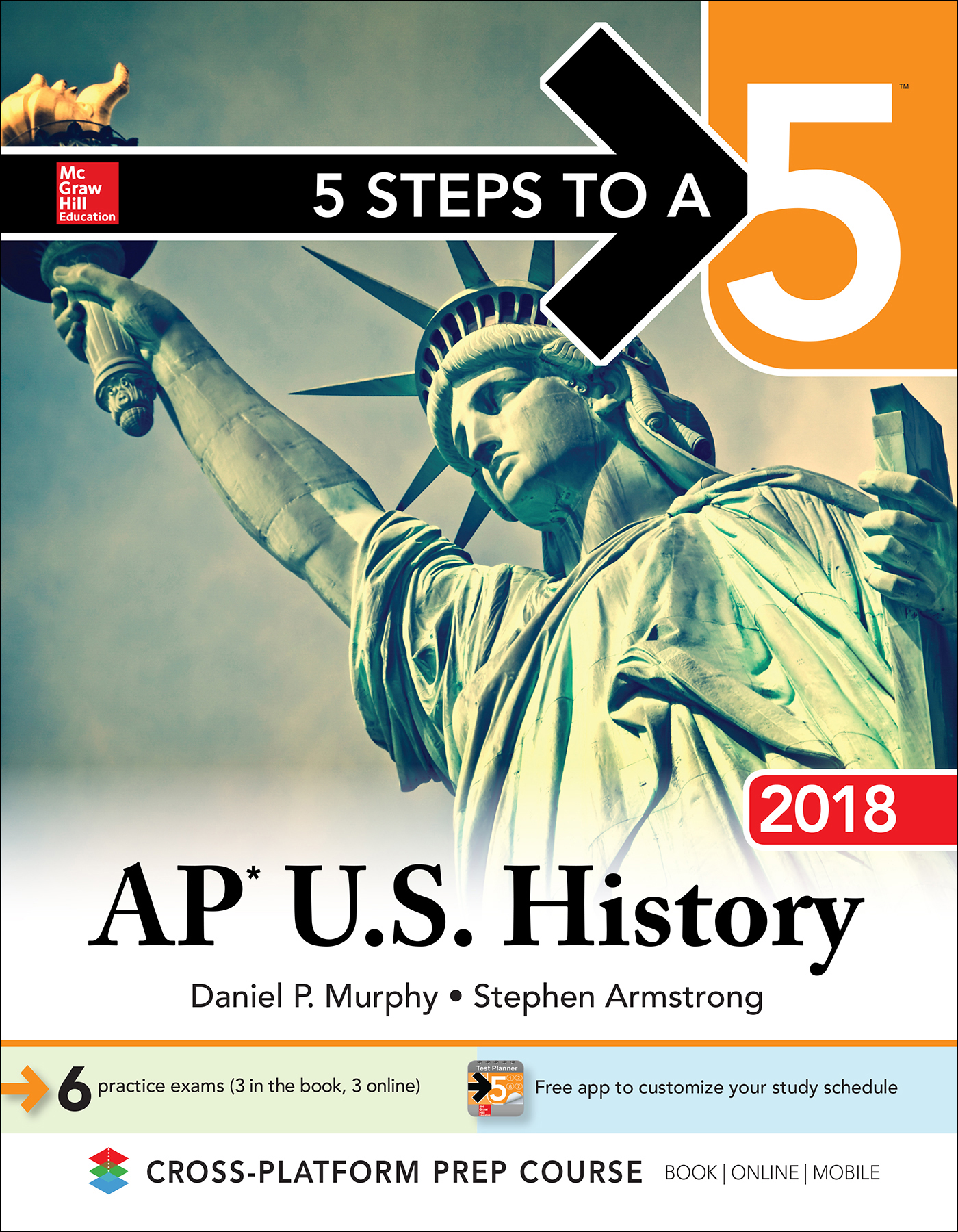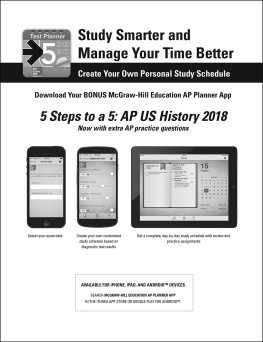Contents
Guide
Page List


Copyright 2017 by McGraw-Hill Education. All rights reserved. Except as permitted under the United States Copyright Act of 1976, no part of this publication may be reproduced or distributed in any form or by any means, or stored in a database or retrieval system, without the prior written permission of the publisher.
ISBN: 978-1-25-986278-6
MHID: 1-25-986278-X.
The material in this eBook also appears in the print version of this title: ISBN: 978-1-25-986277-9, MHID: 1-25-986277-1.
eBook conversion by codeMantra
Version 1.0
All trademarks are trademarks of their respective owners. Rather than put a trademark symbol after every occurrence of a trademarked name, we use names in an editorial fashion only, and to the benefit of the trademark owner, with no intention of infringement of the trademark. Where such designations appear in this book, they have been printed with initial caps.
McGraw-Hill Education eBooks are available at special quantity discounts to use as premiums and sales promotions or for use in corporate training programs. To contact a representative, please visit the Contact Us page at www.mhprofessional.com.
Trademarks: McGraw-Hill Education, the McGraw-Hill Education logo, 5 Steps to a 5, and related trade dress are trademarks or registered trademarks of McGraw-Hill Education and/or its affiliates in the United States and other countries and may not be used without written permission. All other trademarks are the property of their respective owners. McGraw-Hill Education is not associated with any product or vendor mentioned in this book.
AP, Advanced Placement Program, and College Board are registered trademarks of the College Board, which was not involved in the production of, and does not endorse, this product.
The series editor was Grace Freedson, and the project editor was Del Franz.
Series design by Jane Tenenbaum.
TERMS OF USE
This is a copyrighted work and McGraw-Hill Education and its licensors reserve all rights in and to the work. Use of this work is subject to these terms. Except as permitted under the Copyright Act of 1976 and the right to store and retrieve one copy of the work, you may not decompile, disassemble, reverse engineer, reproduce, modify, create derivative works based upon, transmit, distribute, disseminate, sell, publish or sublicense the work or any part of it without McGraw-Hill Educations prior consent. You may use the work for your own noncommercial and personal use; any other use of the work is strictly prohibited. Your right to use the work may be terminated if you fail to comply with these terms.
THE WORK IS PROVIDED AS IS. McGRAW-HILL EDUCATION AND ITS LICENSORS MAKE NO GUARANTEES OR WARRANTIES AS TO THE ACCURACY, ADEQUACY OR COMPLETENESS OF OR RESULTS TO BE OBTAINED FROM USING THE WORK, INCLUDING ANY INFORMATION THAT CAN BE ACCESSED THROUGH THE WORK VIA HYPERLINK OR OTHERWISE, AND EXPRESSLY DISCLAIM ANY WARRANTY, EXPRESS OR IMPLIED, INCLUDING BUT NOT LIMITED TO IMPLIED WARRANTIES OF MERCHANTABILITY OR FITNESS FOR A PARTICULAR PURPOSE. McGraw-Hill Education and its licensors do not warrant or guarantee that the functions contained in the work will meet your requirements or that its operation will be uninterrupted or error free. Neither McGraw-Hill Education nor its licensors shall be liable to you or anyone else for any inaccuracy, error or omission, regardless of cause, in the work or for any damages resulting therefrom. McGraw-Hill Education has no responsibility for the content of any information accessed through the work. Under no circumstances shall McGraw-Hill Education and/or its licensors be liable for any indirect, incidental, special, punitive, consequential or similar damages that result from the use of or inability to use the work, even if any of them has been advised of the possibility of such damages. This limitation of liability shall apply to any claim or cause whatsoever whether such claim or cause arises in contract, tort or otherwise.
CONTENTS
PREFACE
So, you have decided to take AP U.S. History. Prepare to be continually challenged in this course: this is the only way you will attain the grade that you want on the AP exam in May. Prepare to read, to read a lot, and to read critically; almost all students successful in AP U.S. History say this is a necessity. Prepare to analyze countless primary source documents; being able to do this is critical for success in the exam as well. Most important, prepare to immerse yourself in the great story that is U.S. history. As your teacher will undoubtedly point out, it would be impossible to make up some of the people and events you will study in this class. What really happened is much more interesting!
This study guide will assist you along the journey of AP U.S. History. The chapter review guides give you succinct overviews of the major events of U.S. history. At the end of each chapter is a list of the major concepts, a time line, and multiple-choice and short-answer review questions for that chapter. In addition, a very extensive glossary is included at the back of this manual. All of the boldface words throughout the book can be found in the glossary (it would also be a good study technique to review the entire glossary before taking the actual AP exam).
The first five chapters of the manual describe the AP test itself and suggest some test-taking strategies. There are also two entire sample tests, with answers. These allow you to become totally familiar with the format and nature of the questions that will appear on the exam. On the actual testing day you want absolutely no surprises!
In the second chapter, you will also find time lines for three approaches to preparing for the exam. It is obviously suggested that your preparation for the examination be a year-long process; for those students unable to do that, two alternative calendars also appear. Many students also find that study groups are very beneficial in studying for the AP test. Students who have been successful on the AP test oftentimes form these groups very early in the school year.
It should also be noted that the AP U.S. History exam that you will be taking may be different than the one that your older brother or sister took in the past. The format of the exam changed in 2015. We will outline the test in detail in the first several chapters. Please do not use old study guides or review sheets that were used to prepare for prior tests; these do not work anymore!
We hope this manual helps you in achieving the perfect 5. That score is sitting out there, waiting for you to reach for it.
INTRODUCTION: 5-STEP PROGRAM
The Basics
This guide provides you with the specific format of the AP U.S. History exam, three sample AP U.S. History tests, and a comprehensive review of major events and themes in U.S. history. After each review chapter, you will find a list of the major concepts, a time line, and several review multiple-choice and short-answer questions.
Reading this guide is a great start to getting the grade you want on the AP U.S. History test, but it is important to read on your own as well. Several groups of students who have all gotten a 5 on the test maintain that the key to success is to read as much as you possibly can on U.S. history.
Reading this guide will not guarantee you a 5 when you take the U.S. History exam in May. However, by carefully reviewing the format of the exam and the test-taking strategies provided for each section, you will definitely be on your way! The review section that outlines the major developments of U.S. history should augment what you have learned from your regular U.S. history textbook. This book wont give you a 5, but it can certainly point you firmly in that direction.




